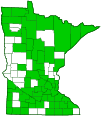common buckeye
(Junonia coenia)
Conservation • Description • Habitat • Ecology • Distribution • Taxonomy
|
|
||||||||||||||
Description |
Common buckeye is a medium-sized to large brushfooted butterfly. It has a wingspan of 1⅝″ to 2¾″. The summer form is larger and brighter orange, the winter form is paler and has smaller black marks. The forewing has an elongated, squared off tip (apex). The upperside of the forewing is brown with two orange bars with black borders on the forewing cell; a subapical white band; a large eyespot that is completely surrounded by the subapical white band; a small eyespot in the apical area; a submarginal orange spot near the inner margin; and usually 1 to 4 submarginal spots in the apical area. Both forewing eyespots have a blue pupil and are outlined with a pale yellow band and a diffuse dark brown line. The upperside of the hindwing is brown with a white fringe; two beige marginal bands with dark borders; a submarginal orange band; a large postmedian eyespot near the leading margin; and a small postmedian eyespot near the inner margin. Both hindwing eyespots have a colored crescent at the top of the black center and are surrounded by a pale yellow band and a thin black line. The crescent of the smaller spot is blue, that of the larger crescent is magenta grading to blue. The underside of both wings of the summer form is light brown with faint markings mirroring those on the upper surface. The winter form is similar but reddish-brown and with less distinct markings. The caterpillar is up to 1¾″ long and is highly variable in color. Though fierce looking, they are harmless to the touch. The head is orange with black bordering the triangular frontal area (frons); two short, black, spiny, branched projections (scoli); and numerous small, white, wart-like projections (tubercles) with black, bristle-like hairs (seta). The thorax and abdomen are usually mostly black on the upper (dorsal) surface with a pair of pale narrow stripes bordering a black middorsal stripe. The sides are white, orange, or white and orange. The third thoracic segment and each abdominal segment have seven black scoli. The middorsal and subdorsal scoli have blue bases, the rest have orange bases. The scoli on the first thoracic segment are pale with black branches. The leg-like projections on the abdomen (prolegs) are orange. Mature caterpillars are found from July onward. |
Size |
Total length: 1⅛″ Wingspan: 1¾″ to 2⅝″ |
Similar Species |
No similar species in Minnesota. |
Habitat |
Fields, pastures, roadsides, parks, and other open areas with low vegetation and some bare ground. |
Ecology |
Season |
Two or three broods from late June to late September. |
Behavior |
Caterpillars are solitary feeders. |
Life Cycle |
The male perches on the ground or low vegetation waiting for a receptive female, or practically anything else, to pass by. After mating, the female lays her eggs singly on leaf buds and the upperside of host plant leaves. The larva molts four times before pupating. There are two generations each year. The last generation adult migrates south in early October, overwinters in a warmer area, and returns north in mid-June or late June. |
Larva Hosts |
Leaves, flowers, and fruits of mostly plants in the Plantaginaceae (plantain) and Scrophulariaceae (snapdragon) families. |
Adult Food |
Flower nectar from aster (Symphyotrichum spp.), chicory (Cichorium intybus), dogbane (Apocynum spp.), curly-cup gumweed (Grindelia squarrosa), knapweed (Centaurea spp.), peppermint (Mentha x piperita), coreopsis (Coreopsis spp.), and other plants. |
Distribution |
||
|
Sources |
|
| 2/2/2025 | ||
Occurrence |
||
|
||
Taxonomy |
|
Order |
|
Superfamily |
Papilionoidea (Butterflies) |
Family |
Nymphalidae (brush-footed butterflies) |
Subfamily |
Nymphalinae (Checkerspots, Anglewings, Peacocks, and Allies) |
Tribe |
Junoniini (buckeyes, comodores, and allies) |
Genus |
Junonia (buckeyes and pansies) |
Subordinate Taxa |
|
|
|
Synonyms |
|
Junonia bergi Precis coenia |
|
Common Names |
|
buckeye common buckeye |
|
Glossary
Proleg
A fleshy structure on the abdomen of some insect larvae that functions as a leg, but lacks the five segments of a true insect leg.
Pupa
The life stage of some insects undergoing transformation. In caterpillars, the chrysalis.
Scolus
A spiny, branched projection from a larval body wall, the branches terminating with a single stiff, hair-like or bristle-like tip.
Seta
A usually rigid bristle- or hair-like structure on butterflies and moths used to sense touch. Plural: setae.
Visitor Photos |
||
Share your photo of this insect. |
||
This button not working for you? |
||
Nancy Falkum |
||
 |
 |
|
Oronoco Prairie SNA Buckeye ‘Junonia coenia’ on Rough Blazing Star ‘Liatris aspera’ |
||
Wayne Perala |
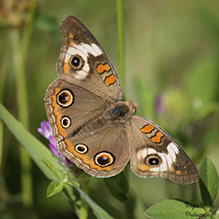 |
MinnesotaSeasons.com Photos |
||
 |
 |
|
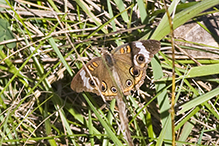 |
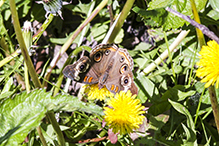 |
|
 |

Slideshows |
Junonia coenia (Common Buckeye) |
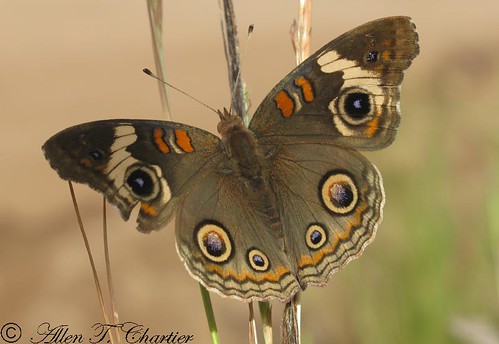
|
Common Buckeye on native aster |
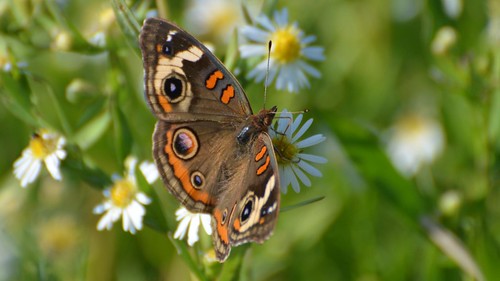
|
Common Buckeye |
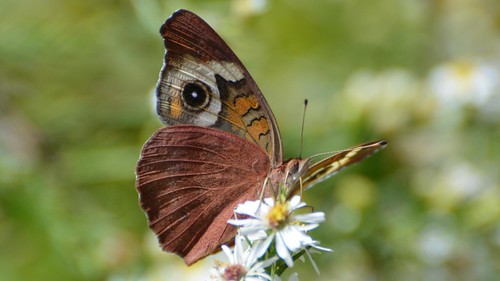
|
Buckeye |
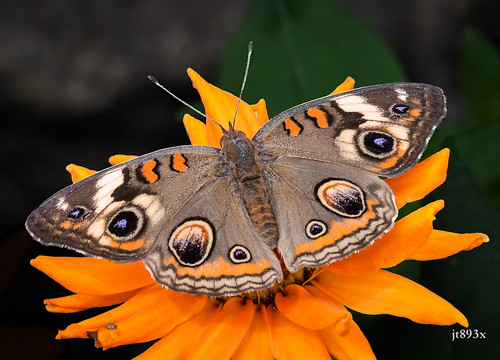
|

Visitor Videos |
||
Share your video of this insect. |
||
This button not working for you? |
||
|
Other Videos |
||
Common Buckeye - September 7, 2013 |
About
Published on Sep 11, 2013 Common Buckeye (Junonia coenia), Mass Audubon Allens Pond, Westport, Massachusetts, Saturday morning, September 7, 2013, 11:27 AM - Canon PowerShot SX50 HS MvI_45571; 11 sec. |
Buckeye Butterfly. |
About
Uploaded on Sep 27, 2011 Junonia coenia, Common Buckeye, is a butterfly that can't survive cold winters. Even the caterpillars die after the first frost. Naturally it's up to members from subtropical and tropical parts of the world to repopulate their norther range each year. |
Junonia coenia |
About
Published on Oct 11, 2013 Caterpillar having a bit of lunch |

Visitor Sightings |
||
Report a sighting of this insect. |
||
This button not working for you? |
||
Nancy Falkum |
Location: Oronoco Prairie SNA Buckeye ‘Junonia coenia’ on Rough Blazing Star ‘Liatris aspera’ |
 |
Andrew Waller |
Location: Clay County |
| Wayne Perala 6/22/2020 |
Location: Maplewood State Park |
 |
MinnesotaSeasons.com Sightings |
||

Created: 4/23/2009 Last Updated: © MinnesotaSeasons.com. All rights reserved. |
